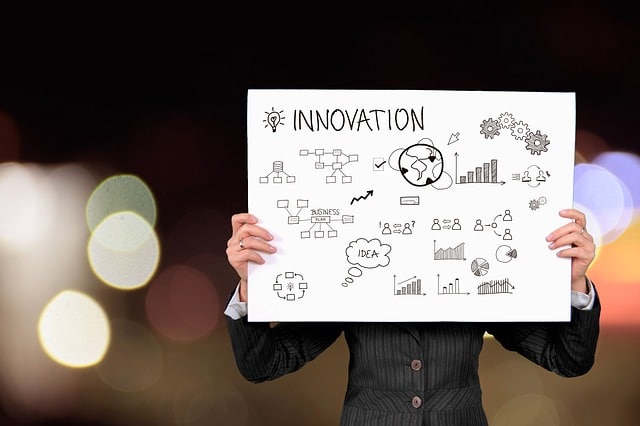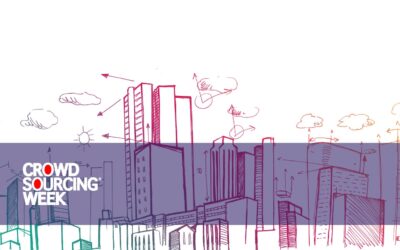The firms S&P Dow Jones Indices and RobecoSAM, which focuses on sustainability investing, announced the results of their annual review of the Dow Jones Sustainability Indices (“DJSI”). The two state that the DJSI is the first global index to track the leading sustainability-driven companies, worldwide, based on RobecoSAM’s analysis of financially material Environmental, Social, and Governance (ESG) factors.
RobecoSAM does the legwork. They conduct an annual Corporate Sustainability Assessment (CSA) with the 3000 or so publicly traded firms that pass muster and agree to participate. The CSA consists of both top-down financial analysis of the firm’s performance, along with interviews with the firm’s leadership. The results of RobecoSAM’s analysis enable the firm to identify the top scoring company in each of the 24 industry groups.
By way of example, please find here a link to the scorecard for Roche Holding AG, the sustainability leader for the Pharmaceuticals, Biotechnology & Life Sciences industry group in 2015. Uneasy lies the head that wears a crown: each year new challengers knock off a fair number of incumbents.
The Innovation Management Factor
RobecoSAM’s work to find a link between a company’s effectiveness in pursuing sustainability and its financial performance raised interesting questions in my mind. Are the leaders generally capable, with their successful pursuit of sustainability serving as one of many expressions of that competence? Or, does the pursuit of sustainability, in particular, confer relative advantage to the entire organization?
What caught my attention, in particular, was that RobecoSAM includes “innovation management” as a critical success factor for achieving sustainability leadership in a number of the industry groups. Page two of the Roche scorecard shows how that company scored on “innovation management,” for example. Roche is relatively weak on innovation management, relative to the industry best and its own performance on other vectors: an opportunity to improve for 2016.
Intrigued, I contacted RobecoSAM to learn more. The RobecoSAM people, who work in Zurich, were gracious enough to provide further detail.
Questions on Innovation Management
RobecoSAM observes that “the questions on Innovation Management have been developed to include state-of-the-art innovation indicators, covering the whole development chain from innovation input (R&D spending), innovation management (processes in place, KPIs) to innovation output (success rates, return on investment). Additionally, the importance of environmental and social innovation is analyzed.”
They get some data from financial reports. The company’s leadership provides further information, directly, by replying to the RobecoSAM survey.
RobecoSAM assesses innovation management for the Pharmaceuticals, Biotechnology & Life Sciences industry group as follows.
Data Sets to be Analyzed in Regards to Innovation Management
R&D Spending in regards to money, FTE and % of sales.
Innovation Stage: Share of R&D Budget Invested, in %
Average cycle of innovation stage (in months)
Average success rate (surviving projects or ideas when moving from one stage to the next, in %)
Project monitoring and evaluation tools
Innovation Launch Stage
Please indicate the breakdown in R&D investments, development cycles, success rates, and KPIs for the innovation launch stage. Please attach supporting references describing your approach to this stage of your innovation management process and how the success rate of this stage is measured.
R&D Post-Launch (Healthcare)
Please indicate the breakdown in R&D investments, development cycles, success rates, and KPIs for the post-launch stage. Please attach supporting references describing your approach to this stage of your innovation management process and how the success rate of this stage is measured.
Product Innovations (Healthcare)
Please indicate the percentage of 2014 revenues generated by each of the following product types for product innovations launched in the previous 5 years; product optimizations launched in the previous 5 years Unchanged or minimally changed product or services
Pipeline
Please indicate for the two different types of product innovations respectively:
In regards to technological breakthrough and therapeutic potential.
Process innovation
Covers the timeline when a company has introduced process innovations in past years.
The Link to Sustainability
The RobecoSAM people make the following, direct link between innovation management and sustainability:
Innovation management is linked to sustainability because it is the efficient development of unique solutions for unmet needs that leads to outperformance. Pharma companies that fail to manage innovation over the long term will create less value for society and thus less value for shareholders.
In other words, the outputs from innovation management sustain the company in a literal, economic sense, enabling the company to continue to pursue all forms of sustainability, including the environmental form, which I suspect most people associate with the concept. In the non-profit world the saying is: “no margin, no mission.” That is, the non-profit fails to achieve its social good if it cannot meet its own budget. The same thinking applies here.
Implications for the Innovation Practitioner
The rise of the chief innovation officer has happened alongside the rise of the chief sustainability officer. Both roles, new to the world, speak to the company’s desire to pursue two forms of general goodness to better outcomes. How might we build a culture of innovation? How might we build a culture of sustainability?
The RobecoSAM analysis intrigues me because, in making the connection between stock market performance, sustainability, and innovation management, it suggests that the two chiefs would benefit from working closely together. How might we innovate in more sustainable ways? How might we sustain our innovation practice?
I see examples of this chief-to-chief collaboration happening today. Unilever’s Foundry initiative comes to mind. Unilever happens to lead the Food, Beverage, and Tobacco category (see the section below). Coincidence?
Materials from RobecoSAM
The people at RobecoSAM do a nice job explaining how they derive the DJSI. I found the following materials helpful.
Presentation on the Dow Jones Sustainability Indices (DJSI)
Criteria Weightings per Industry Group: shows in which industries RobecoSAM assigned innovation management as a factor.
Industry Group Leaders for 2015
The leaders for the industry groups follow (effective as of September 2015). Not every industry group had innovation management as a factor.
- Automobiles & Components: Volkswagen AG, Germany
- Banks: Westpac Banking Corp, Australia
- Capital Goods: CNH Industrial NV, United Kingdom
- Commercial & Professional Services: SGS SA, Switzerland
- Consumer Durables & Apparel: LG Electronics, Republic of Korea
- Consumer Services: Sodexo, France
- Diversified Financials: UBS Group AG, Switzerland
- Energy: Thai Oil PCL, Thailand
- Food & Staples Retailing: METRO AG, Germany
- Food, Beverage & Tobacco: Unilever NV, Netherlands
- Health Care Equipment & Services: Abbott Laboratories, United States
- Household & Personal Products: Kao Corp, Japan
- Insurance: Swiss Re AG, Switzerland
- Materials: Akzo Nobel NV, Netherlands
- Media: Telenet Group Holding NV, Belgium
- Pharmaceuticals, Biotechnology & Life Sciences: Roche Holding AG, Switzerland
- Real Estate: Stockland, Australia
- Retailing: Lotte Shopping Co Ltd, Republic of Korea
- Semiconductors & Semiconductor Equipment: Taiwan Semiconductor Manufacturing Co Ltd, Taiwan
- Software & Services: Fujitsu Ltd, Japan
- Technology Hardware & Equipment: Alcatel-Lucent, France
- Telecommunication Services: KT Corp, Republic of Korea
- Transportation: Air France-KLM, France
- Utilities: Gas Natural SDG SA, Spain





0 Comments